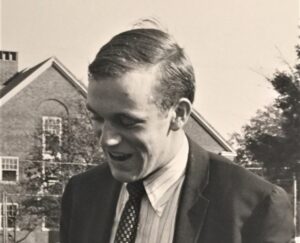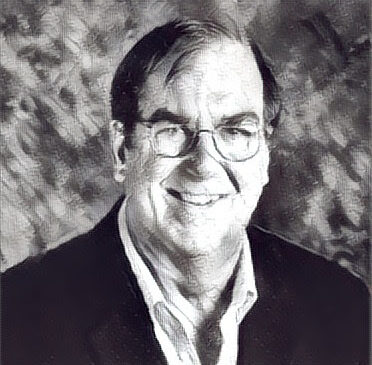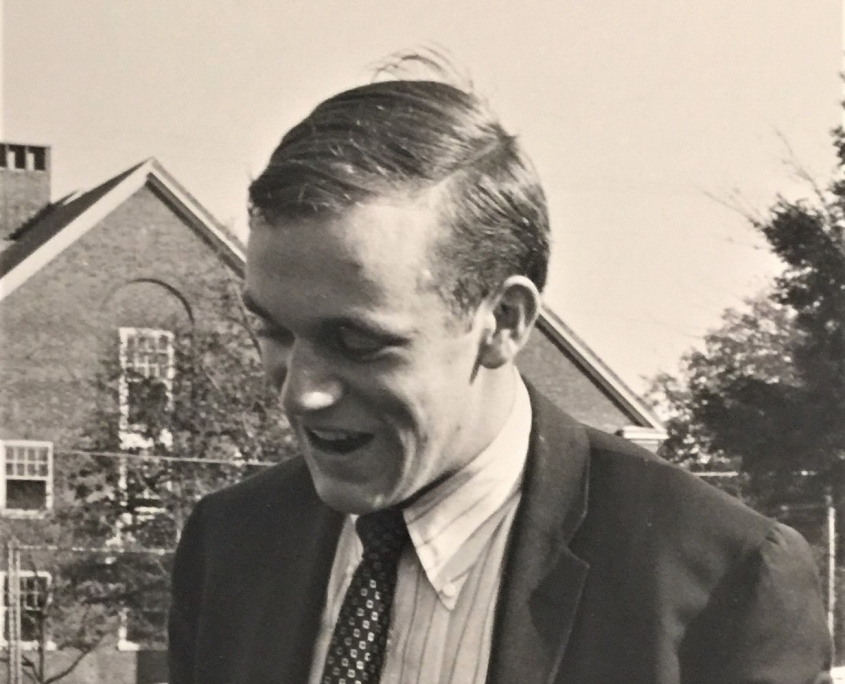How To Introduce Yourself: “Hi, I’m Todd Wheeler”

On my second day as a Yale freshman, I awoke with a slight hangover from the impromptu “Welcome Us” party our entryway threw the night before. I staggered into the common bathroom shared by the 3 rooms on my floor.
My next-door neighbor Tod (pronounced ‘Todd’) was brushing his teeth. Another man was finishing a shower and someone was in a stall, taking a shit. “Good morning, Tod,” I said as I started to brush my teeth at the sink next to his.
“Hi” I later said to the man exiting the shower, uncertain about his name.
Later that day, I bumped into Tod on the walkway near Bingham Hall. After some chit-chat, I shared this observation: “You know, Tod, it was a bit awkward this morning. I couldn’t remember the name of the guy coming out of the shower. I remembered your name. But not his.”
Todd smiled knowingly and said, “Actually, that’s not surprising. My mom was an actress before she got married, and she taught me the best way to introduce myself. She explained that most sentences have a lot of words that follow one another, providing context. If you hear a string of words that say something like ‘the boy went to the …” and the following word sounds like ‘store’ … well, it’s probably the word ‘store.’ If the next sentence has the boy buying something, then you know the word was ‘store.'”

“But names are different,” she had explained. “A name has no context. It needs to be heard CLEARLY … enunciated precisely. And, if it is to be remembered, it needs to be registered in the listener’s brain and saved as a memory.
Normal speech is about 120 words per minute. When you get to your name, you need to slow down to half that speed.”
“When you say your name,” she had advised Tod “look the other person directly in the eye, shake their hand, and say your name slowly, carefully, with a pause between your first and last name. Say ‘Hello, glad to meet you (pause). My name is TOD (pause) WHEELER (pause).’
“People will register your name and remember it. Just watch. Other people sometimes rush their names, and it’s almost impossible to understand their names, much less remember them. The key to making an impression is to do what I just said.”
That seemed wise. I made a note to slow down when introducing myself.
Todd continued, “What else do you remember about me from yesterday?”
“Well, I remember you are from Buffalo,” I said.
“Right! My mom suggested further that it’s best to share a “connector” — a fact you have in common — as quickly in a conversation as possible. That way people associate the name with the person AND a fact connected to their life. I knew you were from New Jersey, so I immediately asked about snow in New Jersey. When you answered about snow, I shared that I was from Buffalo … and it had lots of snow. Remember the snowplow that blocked our walk with a 10-foot drift? I know it’s silly – it’s not important, but it was a connector. And, see? — it worked! You remembered I was from Buffalo. I am starting to have a context for you, not just another guy in the entryway.”
Wise words indeed. When introducing yourself:
- Slow down to half speed. Pause between first and last names. Look people directly in the eye. Meeting you will be something important in their lives — don’t gloss over it.
- Share a factual connection as soon as possible, the more salient to them, the better. (Snow as not that important, but it was better than nothing.)

